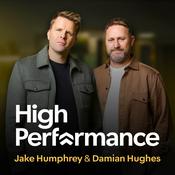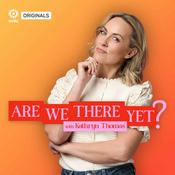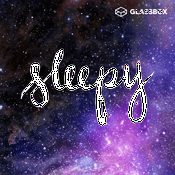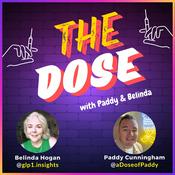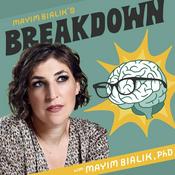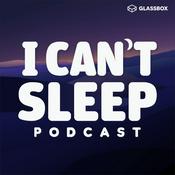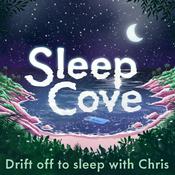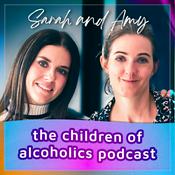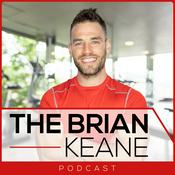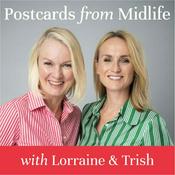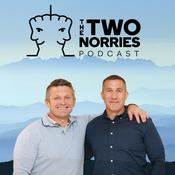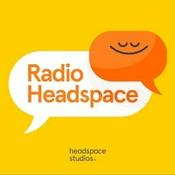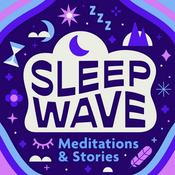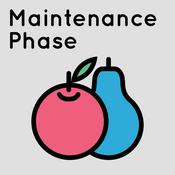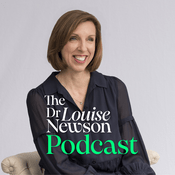167 episodes

F*ck 'em: Authenticity, Play, and Vulnerability as a Therapist
12/12/2025 | 1h 7 mins.
In this special “take your learner hat off” episode of Notice That, Bridger and Jen sit down with Jennifer Ann Counseling—EMDR therapist and comedy content creator—for a playful, honest conversation about being a therapist and a human.This episode isn’t about teaching a specific technique. It’s about humor, authenticity, and why laughter belongs alongside depth in trauma work. We talk about how Jennifer’s platform grew, what it’s like navigating social media as a therapist, handling negative comments, and why being real often connects more than being polished.We also explore EMDR in everyday practice—ritual, intention, parts work, and the familiar client experience of “I don’t know why this works… but it does.”Connect with Jennifer Ann CounselingInstagram / TikTok: @JenniferAnnCounselingFree resources available via her bioIf this episode resonates, please subscribe, leave a review, and share it with a colleague who needs a reminder that therapy can be human, playful, and deeply meaningful.See Privacy Policy at https://art19.com/privacy and California Privacy Notice at https://art19.com/privacy#do-not-sell-my-info.

Tagging Trauma in the Nervous System: EMDR, Somatics, and Polyvagal Wisdom with Dr. Arielle Schwartz
05/12/2025 | 59 mins.
In this episode of Notice That: An EMDR Podcast, Jen and Bridger sit down with Dr. Arielle Schwartz—somatic psychologist, EMDR therapist, and author of EMDR Therapy and Somatic Psychology—to explore what really happens when EMDR and body-based work are woven together in the therapy room.Together, they dive into:How Arielle’s early training in somatic psychology shaped the way she learned and practices EMDRWhy the body scan and somatic check-ins are not just “boxes to tick,” but core guides for pacing, target selection, and resolutionPolyvagal theory’s view of how trauma gets “tagged” in the nervous system—both in external cues and internal sensationsWhat to do when clients say, “I don’t feel anything in my body” and how even that response is meaningful dataThe myth that SUDs “should always go down,” especially with dissociative and complex trauma presentationsArielle and Barb Maiberger’s “golden nugget practice” and why we shouldn’t wait for a SUD = 0 to install and future-template meaningful shiftsTherapist embodiment: using our own nervous system as an instrument for attunement, pacing, and repairArielle also shares about her Somatic EMDR trainings through BodyLab, her therapist retreats in Sedona and Costa Rica, and her Beyond Trauma nervous system care retreats, including an immersive experience in South Africa that combines yoga, nervous system education, and observing animals in the wild.You’ll hear practical language, case examples, and flexible ways to honor EMDR’s structure while staying deeply relational, embodied, and responsive to the nervous system in front of you.Learn more about Dr. Arielle Schwartz:Website (events, retreats, trainings): resilienceinformedtherapy.comWebsite (blog, yoga, additional resources): drarielleschwartz.comCheck out her card deck that integrates nature photography with quotes from The Post-Traumatic Growth Guidebook—a powerful tool for helping clients locate themselves in their healing process and set intentions for EMDR and somatic work.See Privacy Policy at https://art19.com/privacy and California Privacy Notice at https://art19.com/privacy#do-not-sell-my-info.

Neurofeedback + EMDR: A Conversation with Leigh Povia
02/12/2025 | 54 mins.
In this episode of Notice That, Bridger and Jen sit down with neurofeedback expert Leigh Povia, LCSW, RPT, BCN, founder of Center for Dynamic Growth, to explore how neurofeedback can strengthen, support, and accelerate trauma therapy.Together, they discuss:What neurofeedback actually is—beyond the buzzwordsHow brainwave training mirrors internal states and supports regulationWhy neurofeedback can open doors when EMDR alone feels “stuck”How clinicians can partner with neurofeedback providersThe developmental trauma connection: attachment, arousal, and brain-based interventionsA powerful case example of a child whose system finally found calmPractical uses for neurofeedback in resourcing, closure, and state stabilizationLeigh shares candidly about her own learning curve, what it’s like to bring neurofeedback into an EMDR practice, and how both modalities can work in harmony rather than competition.If you’ve ever wondered whether neurofeedback could strengthen your EMDR work, this episode is a rich and relatable introduction.Resources Mentioned:Leigh’s course: Demystifying NeurofeedbackCenter for Dynamic Growth: CenterForDynamicGrowth.comSee Privacy Policy at https://art19.com/privacy and California Privacy Notice at https://art19.com/privacy#do-not-sell-my-info.

The Future of EMDR Tech: Inside WeMind with Founder Sander Kamphuis
20/11/2025 | 44 mins.
In this episode, we wrap up our series on working memory theory in EMDR by sitting down with Sander, co-founder of WeMind—a digital platform designed to optimize bilateral stimulation, track real-time client engagement, and bring advanced working memory taxation into both virtual and in-person EMDR sessions.We explore:How WeMind adapts working memory load dynamically during setsWhy random-interval taxation may enhance reprocessingThe shift from hardware (light bars, tappers) to integrated platformsCultural differences in EMDR practice across countriesHow tech can support relational, attuned therapy rather than replace itThis episode features conversation only—the demonstration portion appears exclusively on YouTube.See Privacy Policy at https://art19.com/privacy and California Privacy Notice at https://art19.com/privacy#do-not-sell-my-info.

Bonus Episode! Conference Recap… A Bit Late
04/11/2025 | 1h 14 mins.
Jen and Bridger finally sit down to share stories and reflections from the 2024 EMDRIA Conference — a few weeks (or months?) later than planned. From early-morning flights and beachside content shoots to laughter-filled dinners and deep professional reflections, this episode captures the whirlwind of being presenters, exhibitors, and community builders all at once.They talk candidly about what it was like to present Enactment-Focused EMDR for the first time, the energy of meeting listeners face-to-face, and their behind-the-scenes take on the polarizing buzz around EMDR 2.0. It’s part travelogue, part professional reflection, and all the reasons this work matters.See Privacy Policy at https://art19.com/privacy and California Privacy Notice at https://art19.com/privacy#do-not-sell-my-info.
More Health & Wellness podcasts
Trending Health & Wellness podcasts
About Notice That
Listen to Notice That, The High Performance Podcast and many other podcasts from around the world with the radio.net app

Get the free radio.net app
- Stations and podcasts to bookmark
- Stream via Wi-Fi or Bluetooth
- Supports Carplay & Android Auto
- Many other app features
Get the free radio.net app
- Stations and podcasts to bookmark
- Stream via Wi-Fi or Bluetooth
- Supports Carplay & Android Auto
- Many other app features


Notice That
download the app,
start listening.
